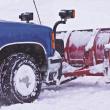MEMA encourages coastal residents to prepare for winter blast
AUGUSTA, MAINE - Coastal Maine could see several inches of snowfall this weekend, particularly the Downeast region. The National Weather Service in Gray and Caribou report snow and blowing snow in Maine is possible Saturday through the evening, with the greatest likelihood along the coast. There is less certainty about inland snow amounts while Downeast and Midcoast Maine are anticipated to receive the brunt of the storm. Wind gusts are predicted at 20-25 mph across the state, with stronger gusts of 35-50 mph across the Downeast and Midcoast Counties. Beach erosion due to large waves and coastal storm surge is possible during Saturday's high tides. A small shift in the storm track could make significant changes in the amount of snowfall, so stay up to date on the latest forecasts. If you are planning to travel this weekend, now is the time to make alternate plans.
"With a serious storm expected to bring several inches of snow and strong winds across certain parts of Maine, I encourage people to be cautious and careful and to avoid driving if at all possible. If you do have to be on the road, it's always important to be mindful of road crews and emergency responders who are working to keep us all safe," said Governor Janet Mills. "As always, be sure to check in on your neighbors and loved ones to make sure they are okay and extend a helping hand to those who may need it."
"We have been tracking this storm for a few days," said MEMA Director Peter Rogers. "While there is still some uncertainty on snowfall amounts, we do know strong winds and blowing snow will impact travel due to low visibility. This will make for hazardous driving conditions and we encourage folks to stay off the road."
Preparing Before The Storm:
- The Governors Energy Office has prepared a Winter Heating Guide to help Maine people stay warm this winter and know where to find assistance if needed.
- Listen to local officials and heed weather alerts in your area.
- Have emergency supplies ready at home that include a 3-day supply of food and water for each person, medications, and anything used daily. You also need an emergency kit in your vehicle.
- Stay off the road during and right after a winter storm, if possible.
- Have a carbon monoxide alarm in place, especially if using alternative heating devices.
- Use safe heating devices and keep them 3 feet or more away from anything flammable.
- Keep the thermostat set to the same temperature during day and night. A snowstorm is not the time to set back the thermostat at night to save a few bucks on your heating bill.
- For long term solutions add insulation to attics, basements, and crawl spaces to maintain higher temperatures in those areas. To prevent drafts, seal cracks and openings around windows, doors, and at sill plates where the house rests on its foundation.
Taking Care During The Storm:
- Stay off roads, if possible. If you travel and become stranded in your car, stay put and call for help. Run the engine just long enough to warm up but be careful not to run out of gas.
- Limit your time outside. If you need to go outside, wear layers of warm clothing. Watch for signs of frostbite and hypothermia.
- Reduce the risk of a heart attack by avoiding overexertion when shoveling or walking in the snow.
Cleaning Up After The Storm:
- Shovel out two exits from your dwelling. Clear snow from furnace vent.
- Wait until the storm has ended before climbing on your roof to remove snow.
- Have a spotter! Do not climb on to or clear your roof alone in case something goes wrong.
- Look for signs of collapse; sagging roof, severe leaks, cracks or splits, bends or ripples in supports, cracks in the masonry, doors that pop open, and creaking, cracking, or popping sounds.
- Use a snow rake or a broom for pitched roofs. Avoid metal tools that can conduct electricity from power lines and might damage your roof.
- Try to remove 2-3 inches of snow at a time to prevent damage to your roof or shingles.
- Wear protective headgear or goggles when removing snow and be careful removing icicles.
- Make sure gutters, drains, and downspouts are free of ice and snow.
- Don't use open flame or electric heating devices to remove snow or ice.
- Remember that ladders can be slippery. Ice can build up on the rungs and on your boots.
- Dress appropriately, take your time, stay warm, and stay safe.
- Consider hiring a professional since snow removal can be dangerous.
For additional preparedness and safety information please log on to www.MainePrepares.com or visit MEMA on Facebook or Twitter.
























